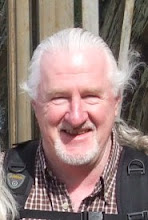 Hilltop House
Hilltop HouseWe have been looking at the writings of Beatrix and their origins. I thought we could divert to her incredible contribution to conservation and a British way of the life, the small hill farm. With the family trips to the lake country as a child and in later life, Beatrix formed a bond with the Lakes District country side. Many of the inspirations for animals and characters came from her country visits.
Beatrix was an astute business woman and on viewing Hilltop farm she decided she had found her oasis and decided to by it with the royalties from her first few books. Hilltop was to be her home until she purchased Castle Cottage which she would then make her homebase and many of the books that were to come were penned in that haven and the village of Near Sawrey. She married William Heelis from the lakes district in 1913, when she was 47, and they lived their life in Castle Cottage for some years . She spent many an hour restoring the buildings but more than that she made a commitment to keep the farm, a working farm. The surrounding Cumbria district would be come prime sketching material.
It was the concept of the traditional hill or fell farming that fascinated her. She immersed herself in the culture of fell farming and of keeping the unique sheep breeds most suited that style of farming. Not only did she acquire farmland as she expanded her holdings she acquired expertise in the farm hands, who she many times kept on. She was instrumental in preserving a way of life. In 1923 she bought Troutbeck farm.With the aid of a shepherd, George Walker, who was the brother-in-law of Tom Storey who ran Hill Top Farm in Sawrey she became an expert in breeding Herdwick sheep, winning many prizes at country shows with them. They built up a celebrated flock of Herdwick Sheep, a breed of small hardy sheep with course dark wool which is indigenous to the Lake District. Even in the 1920's they were a breed under threat as more and more farmers bred other breads of sheep with softer fleeces and more productive lambs.
It was the concept of the traditional hill or fell farming that fascinated her. She immersed herself in the culture of fell farming and of keeping the unique sheep breeds most suited that style of farming. Not only did she acquire farmland as she expanded her holdings she acquired expertise in the farm hands, who she many times kept on. She was instrumental in preserving a way of life. In 1923 she bought Troutbeck farm.With the aid of a shepherd, George Walker, who was the brother-in-law of Tom Storey who ran Hill Top Farm in Sawrey she became an expert in breeding Herdwick sheep, winning many prizes at country shows with them. They built up a celebrated flock of Herdwick Sheep, a breed of small hardy sheep with course dark wool which is indigenous to the Lake District. Even in the 1920's they were a breed under threat as more and more farmers bred other breads of sheep with softer fleeces and more productive lambs.
 TroutBeck Farm
TroutBeck FarmBeatrix continued to buy property, and in 1930 bought the Monk Coniston Estate - 4000 acres from Little Langdale to Coniston - which contained Tarn Hows. This large sheep farm of 1900 acres was spectacularly sited on the lower slopes of Kirkstone Pass. It was under threat of development and Beatrix Potter was keen to keep the farm together as working unit, so she bought it. Beatrix Potter used the farm as a setting for the Fairy Caravan stories, and several other pieces. Some of her writing was done in a little study she had at the farm.
She was a scientist, farmer, a conservationist, an accomplished artist and writer all in one. She as an entrepreneur too which we will discuss later. I imagine her strolling the town setting of and sketching away at what ever caught her eye. I can see her wandering the borders of the lakes and tarns stopping to sketch what caught her eye. And Beatrix needed to draw, it was in her blood and a good dose of drawing would do her good so to speak.
Her land holdings portion of her estate were to be administered by the National Trust and she was adamant that the farms be kept working farms with minimal rent, on her passing. She formed a good bond with National Trust while alive and passed on certain lands while alive with the rest transferring with her estate. When she died on 22 December 1943, Beatrix Potter left fourteen farms and 4000 acres of land to the National Trust, together with her flocks of Herdwick sheep. She stipulated in her will that the farms she left to the Trust should be let at a moderate rent, and that the landlord's flocks of sheep on the fell farms should be pure Herdwick in breed. Beatrix was the first woman to be elected president-designate of the Herdwick Sheep Breeders' Association, which continues to flourish.
So because of Beatrix you may travel to the lakes district to Sawrey and see Hilltop, Troutbeck Farm much in they may they have always been and marvel in the intact woodlands, stone fences and quaint cottages and farming buildings in the district.
Beatrix Potter, a true renaissance woman. Tommorow, back to the picture letters and the evolution of Beatrix, the entrepreneur.
